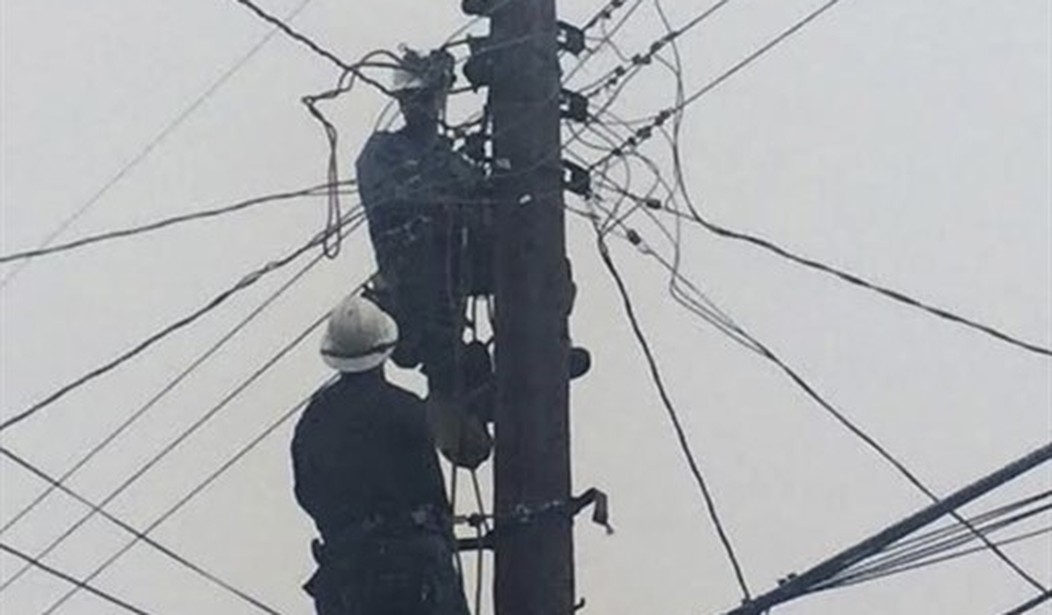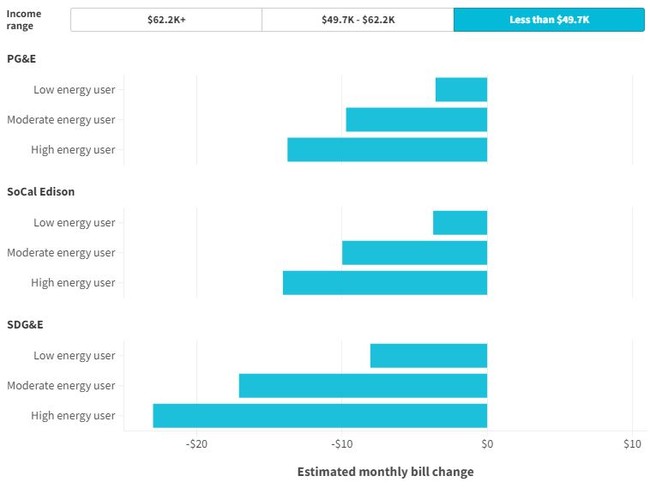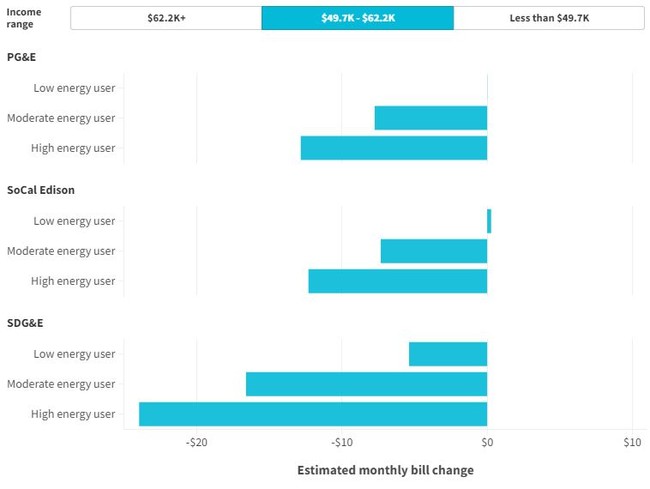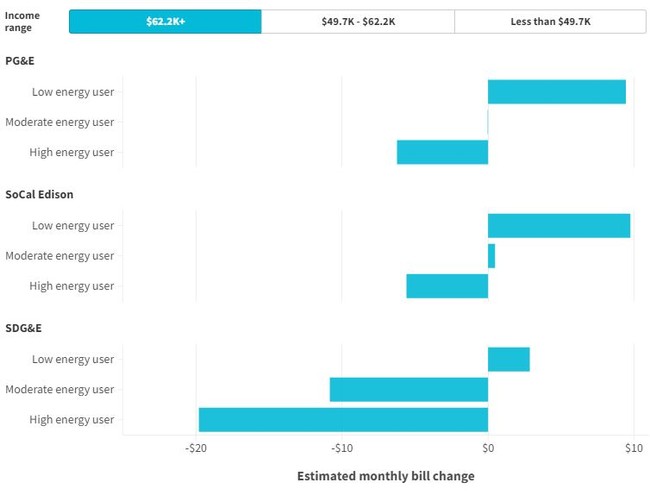This is a long and fairly complicated story that won't be of interest to everyone. If you don't really care about California electricity rates, well, I don't blame you. I probably wouldn't care either except that I live here which means I'm stuck paying for whatever the Democrats in Sacramento and the Democrats on the Public Utilities Commission decide is best for all of us.
I'm going to try to breeze through this as simply as possible to eventually get to my point which is that California encouraged the adoption of rooftop solar for decades but because it was so successful they decided they would have to turn around and soak those same people for more money.
Let's start at the beginning with the big picture. California has been offering a deal to those willing to install rooftop solar for more than 20 years. Under a plan called "net metering" those who installed solar would be able to sell their excess power back to the the utilities at a rate which was comparable (often less) than what those same consumers were charged when they bought power from the utilities. In effect, if you installed solar and regulated your own usage over the course of a year, you could potentially break even on your bill. The amount you used (at night when the sun isn't shining) was evened out by the amount you generated. Your annual bill could effectively be zero or in some cases the utilities might even owe you money.
Twenty years ago, solar was still pretty expensive so even if your bill went to zero, it would take many years of zeroing it out to cover the cost of installing the solar panels in the first place. In other words, it was mostly well off people who were doing this because they could afford to put the money up now and only have it break even 15 or 20 years later (or never if the system didn't last that long or they moved).
But things started to change in the past decade. Solar panels became cheap enough that companies were offering free installation with a leasing plan. In other words, they would pay for the panels and you would agree to buy the power generated for a rate slightly lower than what the utilities were charging. So you weren't able to zero out your bill, but you could save some money without having any expense up front.
Where I live in Southern California, we started to see schools and libraries and other public spaces install big solar arrays in their parking lots. The panels kept the cars in the shade and also generated a lot of cheap power for the city.
Residential rooftop solar also was booming because the cost of panels kept dropping, to the point that instead of needing 20 years to break even on a new system, you could probably break even in less than 10 years maybe as little as 6-7 years if you had a big bill to begin with (and thus were going to save more by zeroing out your bill). The panels themselves also got better. They produced more power and lasted longer. Some companies were guaranteeing them for 25 years.
At the same time, electricity rates in California were going up. As you may know, California had years of drought and during those years there were lots of wildfires in the state. The most famous of those was the fire that wiped out most of Paradise, CA in 2018. The Camp Fire, as it was called, is still the deadliest wildfire in the state's history (85 people died) but it was also the most expensive natural disaster in the world that year with damages exceeding $16 billion. And that was just one fire. There have been many other serious fires in the state over the past decade, many sparked by power lines owned by one of the state's big three power monopolies. And that meant they were on the hook for the damages to both lives and property.
So the power companies were being dragged into court and facing billions in damages and they needed money. Electricity rates in California skyrocketed and are currently the highest in the contiguous US. This is from a recent LA Times editorial.
Rate hikes have become bigger and more frequent, rising even faster than inflation for customers of the big three monopoly utility companies whose rates include costs for expensive wildfire mitigation, grid infrastructure projects and disaster-related payouts.
In Pacific Gas & Electric territory, electric bills have climbed from $128 a month for an average residential customer in January 2020 to $226 today. Southern California Edison bills rose from $114 to $180 a month over that same period. It’s no wonder about 1 in 5 California households (and 1 in 3 low-income customers) are behind on their bills, owing an average of nearly $800.
At some point it became clear to state regulators and utilities that they couldn't continue this way. They needed more money but thanks to rooftop solar, about a million of their most well-off customers were not paying anything. Indeed, the utilities were paying them in some cases. The people who'd taken the incentive California offered were now a problem. And at that time, it was a growing problem. If rooftop solar continued to be a big bargain, it wouldn't be long before even more people effectively escaped the clutches of the power utilities by producing their own power at home more.
So back in 2021 the state proposed a major shift to its net metering plan for solar users. It was called Net Metering 3.0 and the gist was that the utilities would start charging anyone with solar a flat rate based on how many panels they had installed on the roof. For many users it would have worked out to between $50 and $75 per month or something like $700 per year. That's not based on any usage of energy it's just a tax for owning energy generating equipment. In addition, the rate the utilities would pay for the energy you sold back to them would also be cut from around 24 cents per kilowatt hour down to about 6 cents.
It was obvious that this new plan was going to kill the rooftop solar industry and I said so at the time. The flat fee for simply owning the panels meant it would be very difficult to break even on the cost of installing the system and that meant almost no one was going to do it.
The reaction to the Net Metering 3.0 from the industry and the public was not good so they stripped out the part with the flat fee for owing solar panels but they did eventually pass a new version which cut the amount you were paid for generating energy. And though the plan wasn't as bad as originally proposed it has still killed the rooftop solar industry in California.
That solved one of the utilities problems which was that they kept losing their best customers. Thanks to Net Metering 3.0 they don't have to worry about that anymore. But what about all of those people (myself included) who had already installed solar? They were still paying the utilities next to nothing (my bill has been negative for the past two years). They needed some way to get money out of them.
So last year state regulators proposed a new plan under which California homeowners would pay utilities a flat monthly fee based on their income. Again, this has nothing to do with how much power you use, it's solely based on how much money you make. Initially the plan was that top earners would pay as much as $128 per month just for the privilege of being a customer. Then they would pay on top of that for any power they actually used.
Once again, people in California hated this plan and so it was scaled back. Last month the state's Public Utilities Commission finally approved a version of the flat fee which divides households into three incomes. Low income homes will pay $6 per month. Medium income homes will pay $12 per month and high income homes pay $24 per month. To offset those increases, the rate per kWh will drop about 10 percent. Lots of other states have fixed fees in their utility bills but the average nationwide is about $11 per month. So as usual California is gouging with this new electricity income tax.
But here's the key. If you look at this handy breakdown of who pays more and who pays less under the new plan (graphs created by Cal Matters), you find that everyone in the state who has a low income will probably pay less overall. Those are the three big utilities on the left and this is for everyone making under $50k. All the bills should be lower regardless of how much energy you use.
If you switch over to the medium income tab (up to $62k) nearly all of the bills should be lower. There's a tiny increase for low energy users at SoCal Edison but it's estimate to be just .27 cents per month.
And here's the final graph of the remaining people, those making over $62k. Finally we see who is going to be paying more under this plan. It's the low energy users in the state. Why would California target high income/low energy users instead of high income/high energy users (all of whom get a break under this plan)? It's because these are the people who have installed rooftop solar.
To sum this up. California's Net Metering 3.0 plan was aimed at soaking people who had installed solar with a new flat rate. There was a backlash so they dropped it. Then they came back with this fixed rate plan which does exactly the same thing in a different way. It took 3 years but they figured out how to get about $300 a year out of people who had been paying next to nothing or even getting money back from the utilities. According to a Google AI summary, there are just shy of 2 million homes in the state with rooftop solar so we're talking about close to $600 million per year they will rake in with this move. They encouraged rooftop solar for decades as a great way to save money and help the environment and now they are punishing those people for saving money and helping the environment.
Knowing California, this is just the start. That monthly flat fee will start going up and they'll probably claw back the 10% cut on the cost per kWh as well. I give this 2 years before they start crying for more.










Join the conversation as a VIP Member